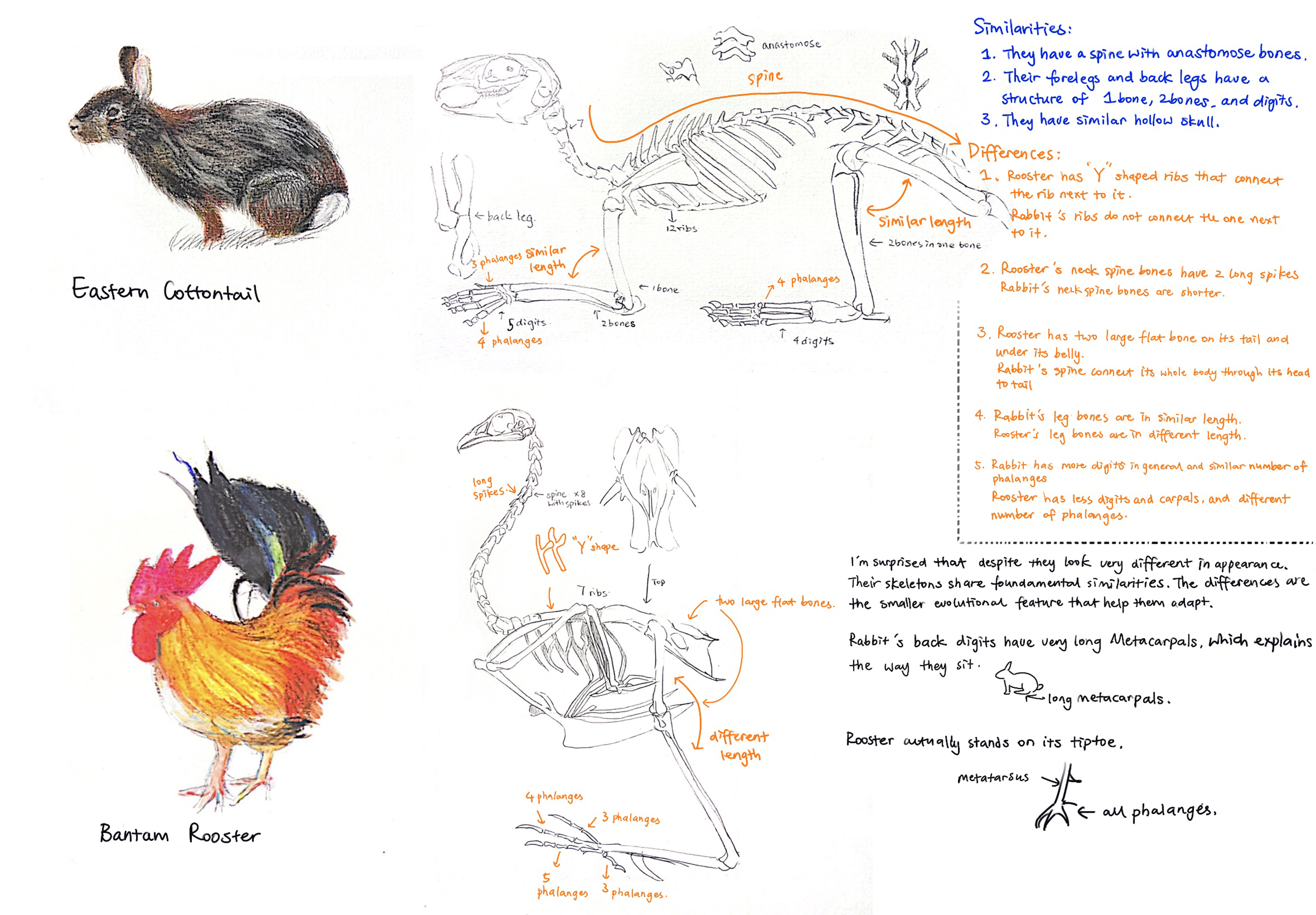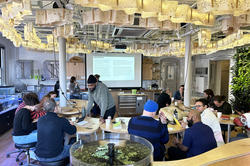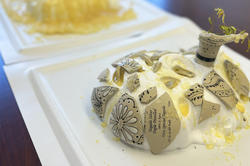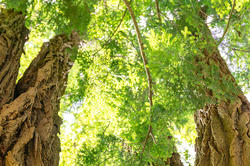Now in its fourth year, the Nature Lab program pairs EPSCoR researchers with grad students working in the fine arts.
RISD Students Use Scientific Fieldwork to Inform Their Art and Design Projects

On a cloudy late-April day, students enrolled in a Liberal Arts class called Understanding the Interconnectedness of the Natural Sciences are donning waders and spraying their ankles for ticks before embarking on a nature walk in West Greenwich, RI. Led by scientists and RISD faculty members Maria Aliberti-Lubertazzi, Hope Leeson, Lucy Spelman and Bonnie Epstein, they set out with nets and collecting jars to explore a series of vernal pools (temporary bodies of water free of fish and other predators) and the pitch pine habitat in which they’ve sprung up.
“We’re encouraging the students to use all five of their senses today,” says Epstein. “In addition to looking, we’re stopping to listen to road sounds, bird song and spring peepers; smelling and feeling fresh soil and branches; and even tasting some of the flora, like white pine tips and wintergreen.”
This is the first time that many of these students have ventured off campus into the woods and their first scientific endeavor since high school biology class. They’ll sketch the site and any organisms they collect and consider the relationships between plant species and soil conditions. Once they’re back on campus, they’ll research an organism of their choice and refine their sketches to include anatomical features important for identifying the species, relevant site characteristics like sunlight and moisture and how the organism interacts with other species in the vicinity.


Throughout the semester, the faculty team has worked together to make science accessible to the students and encouraged them to use the natural world as a source of inspiration for their art and design projects. “The course aims to show how understanding basic natural sciences—geology, ecology, botany and zoology—can inform our awareness of the world around us, including the problems we create in the environment,” the team explains.
In the weeks leading up to the field trip to West Greenwich, students learned to identify rocks and minerals around campus, investigated how nearby buildings are decomposing and used microscopes at the Edna W. Lawrence Nature Lab to examine mosses, lichens and the invertebrate organisms living within them. In addition to developing scientific observational skills and the ability to present their findings in creative ways, they’re learning how to navigate the sometimes intimidating waters of scientific research.
“Listen to our lectures for new ideas and consider what sparks your interest before going online to search for scientific articles,” Spelman advises the class. “Once you select a paper, read the abstract and introduction and then skip to the discussion. Now that you know what questions the authors were asking, you can get more out of the methods and results.”
Each week’s lecture ends with a related prompt students respond to with words and images that convey their ideas about a specific, often abstract, concept. “Explore the concept of rock as a solid that decomposes. Observe the directions in which tree branches grow at the edge of a road versus when they are surrounded by other trees. Consider the relationships between plants and invertebrates and how climate change might alter those relationships.”


The student responses are visually stunning and sometimes surprising. Architecture major Charles Jang BArch 26 reflects on the effects of climate change on migratory butterflies, like the monarch. “Nectar corridors are important stepping stones along the way,” he writes. “The butterflies need nectar to fuel their journey, and flowering plants that rely on temperature to time their blooms might throw off the rhythm of these migrations.”
“Rocks are a symbol of impermanence,” junior Viva Motwani 25 FD writes. “They signify the dynamic nature of the environment and of life in general.” Motwani says that sustainable materials are an important element of her practice as a furniture designer. For her final project, she’s considering the impact of invasive beetles on forests.
“The students are making important connections between their own work and the concepts we’re introducing in this class,” says Leeson. “I love getting them out among the trees and chipping away at that perpetual sense of separation between humans and the rest of life around us.”
Simone Solondz
May 20, 2024


